Eustace Oakley
Mark O’Neill
Mac Parkman
Warning: this story contains mentions of suicide and may be triggering to some readers
Mac Parkman was a vibrant human being who embodied the best attributes humanity and God find endearing in this world. Warm, funny, witty, kind, compassionate, calm, loyal, and caring are just a few of the characteristics that can be used to describe this wonderful young man. He brought so much warmth and sunshine to everyone he touched, yet he was a tough competitor… a true peaceful warrior until he left this earth.

Mac was born on March 10, 2003 in Albuquerque, NM, to a loving, blended family. Mac spent his first six years growing up in the foothills to the west of Tijeras, NM. As the “new” kid in the family, he was welcomed warmly by his mom and sisters while his father was overseas participating in the invasion of Iraq. As a newly knit family that had never raised a son or brother, he brought so much love into their lives and brought them closer together with his presence, a gift that the family shares to this day.
Mac was a quiet boy, always wanting to do things and physically active from the start. Track, baseball, karate, and skiing with his dad were his early activities. He loved being active and with his friends, especially when they would eat out in great places like Blakes, Sadie’s, and Hooters afterwards. He was quick to learn and active all the time. Mac enjoyed an early introduction to God at the local Prince of Peace school where he was loved by teachers and students alike, except for a short period where he was known to tackle the other five-year-old kids.
In 2009, Mac moved to Woodland Park with his family and was enrolled in Colorado Springs Christian School system. He lived on a ranch surrounded by forests and became part of the wrestling team in first grade with almost the entire first grade class. He was one of the only kids to continue wrestling. Mac loved the sport and the camaraderie and continued participation until his passing. He had several very close friends, Nathan and Parker, that would attend “cookie church” with him as the local Methodist church had a very elderly congregation that loved to bake. He loved having his friends over to play games, jump on the trampoline, shoot air guns (or real guns on his dad’s range), play tag, and camp out. We could hear them wrestling and bumping around upstairs well into the night.
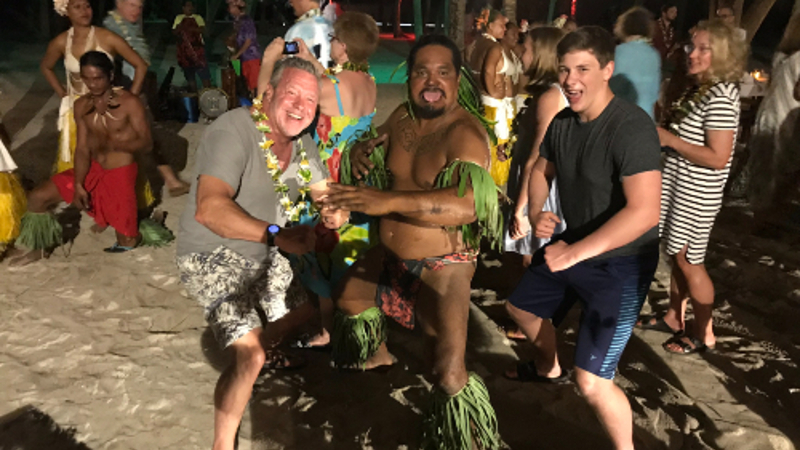
Due to his father’s business activities, Mac fell in love with new places and was always on planes with his dad and family going all over the U.S. and the world. Everywhere he went, he would always want to experience the local culture, food, and sightseeing. He visited Costa Rica, the Hawaiian Islands, Egypt, Finland, Australia, New Zealand, Tahiti, and the UAE. On those trips he rode camels, entered the Great Pyramids, hiked mountains and glaciers, went ziplining, kayaking, scuba diving, snorkeling, practiced skydiving in an indoor skydiving range, and even went skiing in an indoor ski simulator in the UAE desert. He was always interested in what was going on and had a thirst for adventure that never left him.
Mac was also a very active video gamer and loved to game with his friends, both in person and online. Over the years, gaming became one of his outlets. Competition and gaming was very important to him. He developed a close-knit group of friends who competed together and some of the best memories we have of Mac would be his whooping and yelling with his friends while they participated in Apex, Brawlhalla, and Grand Theft Auto.

Most importantly, it was sports that defined who Mac was in his later years. While we knew he loved wrestling, Mac approached us about joining the football team in 7th grade. Of course, we encouraged Mac to be and do what he wanted to do, so he joined the CSCS middle school football team. With wrestling and now football, our family adjusted to a demanding traveling routine that stretched over 10 months of the year with practices, team dinners, and games. We relished every minute Mac was engaged in sports, as we always wanted to support him doing the things he loved. Mac continued this schedule all the way till the end of his junior year when COVID hit and all sports were stopped. This was hard on Mac.
Mac was the consummate team player who gave all he had for the team. While he never was the best player on the team, he always had the best attitude. He had heart, dedication and he really enjoyed participating. Mac loved those wrestling trips where he would be able to stay in a hotel with his teammates and hangout away from his parents.

Mac experienced several high points in high school athletics. His football team went to the state finals and made the playoffs for the first time in years. He also made it all the way to the qualifier for the State Wrestling finals but lost out by one match. He worked hard, left a lot of sweat, and some blood, on the field. We were so proud of Mac. As his wrestling coach said, “it takes talent to win the first round, conditioning to win the second, but heart to win the third. Mac had heart.” He was a true team player and was loved by all his teammates. It was not hard to find out where Mac was, there was usually a group of young men laughing their heads off. Especially on the wrestling team, where the boys had such tight bonds.

Towards the last months of his life, Mac continued to shine as a family member. He spent time at the beach with his friends and his family in Florida and worked hard at school. He also spent a lot of time working out on his own or with friends at the gym. Mac was getting ready to join the Army to follow in his father’s footsteps. On the surface, everything seemed OK. We now know that, while to all of us Mac was…. well Mac, inside he was fighting a daily struggle with mental illness and depression and was determined not to let anyone know.
Mac was a kind, loving, selfless boy. We know he put everything he had into the fight against depression. We wish we knew he was suffering as much as he was, and we encourage anyone struggling with depression or suicidal thoughts to tell someone. Help is available and you are not alone.
We love and miss you every day, Mac.
If you are struggling to cope and would like emotional support, call the Suicide & Crisis Lifeline at 988 to connect with a trained counselor. It’s free, confidential, and available to everyone in the United States. You do not have to be suicidal to call. Suicide is preventable and help is available. If you are concerned that someone in your life may be suicidal, the five #BeThe1To steps are simple actions anyone can take to help someone in crisis.
Are you or someone you know struggling with lingering concussion symptoms or suspected CTE? We support patients and families through the CLF HelpLine, providing personalized help to those struggling with the outcomes of brain injury. Submit your request today and a dedicated member of the Concussion Legacy Foundation team will be happy to assist you. Click here to support the CLF HelpLine.
Michael Patrick
Eric Pelly
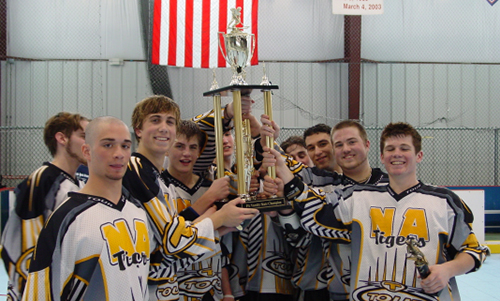
Eric was full of energy…an energy that propelled him and drew others to him. He had a gleam in his eyes, a smile on his face and a loud contagious laugh. Eric was fun; he brought life and laughter to any occasion. His passion for sports was evident from the time he was a young boy. Eric began playing in-line hockey at 6-years-old. Initially he played goalie, then the coach suggested that he play on the line because he was fast and a strong skater. Eric played on numerous hockey and tournament teams.

By Joan Pelly
Eric was full of energy…an energy that propelled him and drew others to him. He had a gleam in his eyes, a smile on his face and a loud contagious laugh. Eric was fun; he brought life and laughter to any occasion.
His passion for sports was evident from the time he was a young boy. Eric began playing in-line hockey at 6-years-old. Initially he played goalie, then the coach suggested that he play on the line because he was fast and a strong skater. Eric played on numerous hockey and tournament teams.
When Eric was 12-years-old, he wrote: “My favorite two sports are hockey and football. I like them because you get a lot of action. I’ve played hockey for six years and am getting tired of it. This year I finally convinced my parents to let me play football. I love football because you get even more action than hockey.”
Due to the summer time commitment, Eric decided not to play football in his junior year of high school. When the season rolled around he said “mom it’s killing me to not be on the field playing.” That’s when he became the self -appointed mascot and crowd instigator at the high school football games. He slathered his body with black and gold paint (his school colors) and draped himself with a black and gold stuffed snake. He could stir up a crowd (in a positive way)!
While always remaining active in hockey, Eric tried many other sports along the way. He swam, played baseball, soccer, basketball, track and cross country, volleyball, and football then found that he loved playing rugby.
Eric started playing rugby on the high school team but was quickly moved to the adult semi-pro team due to his passion for the game, intensity and speed. The physicality, the contact was one thing but there was something about the connection these guys had. After each home rugby match, the team would invite the opposing team to stay and join them for a cookout or pig roast at their clubhouse. They would gather there to watch the Steelers football games and the Penguins hockey games. The guys pitched in and worked to keep their field in pristine condition and the club house clean. Eric enjoyed that camaraderie.
Eric also enjoyed bicycling, skiing, snowboarding, water skiing, wake boarding, scuba diving, windsurfing, and four wheeling in a jeep wrangler. As you can see, he was active and adventurous.
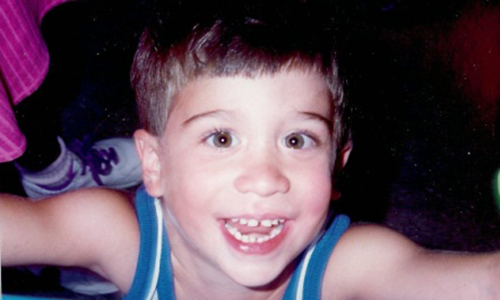
While Eric had that intense love for sports, he also had a passion for life. Family and friends meant a lot to Eric. Whatever anyone needed, Eric was ready and willing to lend a hand. He also cared deeply and was an intent listener; he had a way of making everyone feel that what they had to say was important and interesting. Eric was the son, brother, grandson, nephew, and friend that everyone loved to spend time with. He was the life of the party and always had an entertaining story or two to tell.
Faith was a huge part of who Eric was. Eric was an altar boy when he was younger, when he was a junior in high school he decided to teach 4th grade CCD (religious education). Eric managed to pack a lot into his days; he excelled academically, volunteered, and worked part time at the family business, all while playing on multiple sports teams and enjoying time with family and friends. He had a strong drive for success and passion for life itself. Anyone that knew him had no doubt that Eric could accomplish anything he set out to do.
The intensity with which Eric played sports resulted in three documented concussions; one each year for three consecutive years. The first one (in his sophomore year) playing football for his school team, the second one (in his junior year) from a pick up football game with friends and the third one (in his senior year) while playing rugby for the Pittsburgh Harlequins. That concussion received on September 30th 2006 during a rugby match was different than the others. Eric collapsed on the sidelines holding his head and groaning in pain. He was rushed to the hospital and remained there for two days. On the third day he was released and the only restriction he was given was “no contact sports for 3 months”. At that point, Eric asked if he could run and lift weights so he didn’t get out of shape. He was told that would be okay.
Eric was concerned about getting behind in his school work and pushed himself to go to school and get caught up on missed assignments. He was tired and had headaches but continued to do a little more each day. When I asked him how he was feeling and if he felt a little better each day, he said “yes.” He was released from the hospital on a Monday; one week later he went to the school’s work-out facility with a friend to lift weights.
Ten days after Eric’s rugby concussion and seven days after his release from the hospital…the day after he lifted weights…as we sat down to our family dinner and said our prayers, suddenly the unthinkable happened. Eric’s body stiffened with clenched fists, his eyes rolled back in his head and Eric collapsed with horrible sounds coming from his airway. We immediately called 911 and performed CPR until help arrived. He was taken to the hospital and pronounced dead. Eric’s brain had swollen and herniated, cutting off his breathing and heart rate.
We have since learned that Eric had sustained a head injury on September 16, 2006, just two weeks prior to the severe concussion on September 30, 2006. Eric was 18-years-old; he had recently been moved from the high school team to the adult semi-pro team. The team was driving from Pittsburgh, Pa. to Baltimore, Md. to play a match and return home that night. As I was making plans to go, Eric convinced me that I should stay home and spend the day with his younger sister. He said, “Mom, I’ll be fine, and I’m concerned about Jenna having to spend so much time at my games; spend the day doing something fun with Jenna.”
I understood what he was saying and I also understood that he was on the adult team and wanted to go with the guys. He was no longer playing on a high school team and nobody else’s mom was going to drive to Baltimore for the match. He wanted me to give him that freedom. As a mom that always worried about injuries, that was difficult for me, but I relented.
When Eric got home that evening, he was tired. He sat in the family room with us for a brief time and said he was exhausted, was going to shower and go to bed. Considering they had driven four and a half hours, played a physical match and drove another four and a half hours home, it made complete sense that he was ready to call it a day.
We were unaware that Eric had been removed from a rugby match ( just 2 weeks prior to the devastating head injury he sustained on September 30th) after a hard hit and was given ice to apply to his head on the sidelines. Eric did not tell us about that incident. It was only after his death that teammates told us about that head injury; they said, “Eric was out of it and slept the whole way home.”
Eric loved life, and I’m sure he never thought he could die from complications of a concussion nor did we (his parents). Knowing what we know now, he most certainly had other undiagnosed concussions and too many sub-concussive blows to the head to count: slamming into the boards in hockey, running full tilt into a block wall in basketball so that he could backhand the ball to a teammate keeping it in play, etc. Eric was very competitive; he was intense and aggressive in every sport or activity he participated in.
Learning that Eric’s brain showed signs of Chronic Traumatic Encephalopathy (CTE), deposits of abnormal, toxic protein, called tau) was shocking. For years we had enjoyed watching Eric give it his all as he competed in sports. He had so such passion and drive; it was fun to watch him. Eric thrived on the competition. Although I was always concerned about injuries, I didn’t know that damage could have been accumulating in Eric’s brain. All of the times that Eric accelerated and stopped quickly, his brain was hitting against the skull of his head.
I urge parents, coaches and players to become educated about concussions and sub-concussive head injuries. Never, never, never, let an athlete return to play with a brain injury that is not completely healed. No game is worth it. Emphasize this with your sons and daughters. It’s not “just a concussion”. They must understand that every head injury is serious and requires both physical and mental rest. The brain needs time to heal.
I am not trying to dissuade children from participating in sports. Playing sports has many advantages: physical fitness, confidence, learning to work hard, sportsmanship, trust and working together with teammates. All of these produce more than victories on the field-these skills are tools used in everyday life. I am promoting safer play, receiving proper care in the event of a concussion and gradual return to play when completely symptom free.
Information about concussions is much more readily available today than prior to Eric’s death. I am pleased to see all that Dr. Cantu, Chris Nowinski, Dr. Ann McKee, Dr. Robert Stern and the Concussion Legacy Foundation are doing to get the information out. Dr. Cantu’s book lists excellent questions to ask athletes following a hit or jarring of the brain.
You can read more about Eric’s story in “Concussed” by Keith Primeau and Kerry Goulet. Keith and Kerry were both professional hockey players who formed stopconcussions.com after retiring due to concussions. They work tirelessly to educate athletes, coaches and parents about concussions, emphasizing safe play and respect for oneself and the opponent, along with proper management of concussive head injuries.
It is important to our family to do everything we can to prevent a tragedy such as Eric’s from happening to anyone else. Each year, our family hosts an event to raise awareness and increase knowledge about concussive head injuries. It started as a basketball game among Eric’s friends and the teachers at his high school and has progressed to a basketball tournament with community involvement. Last year we had 34 teams compete. Kerry Goulet from stopconcussions.com captivated the attention of students, teachers, and parents with his entertaining way of delivering a very serious message.
On October 10, 2012, the 6th anniversary of Eric’s death, we showed Chris Nowinski’s “Head Games” documentary at the Harris Theater in Pittsburgh. That evening, a teacher/coach that has played in the Eric Pelly Memorial Basketball Game stated that because of what she had learned during our event, she had stood her ground and refused to allow a girl to return to a basketball game (after hitting her head) against all the resistance she received. Later that evening, the girl had a seizure and was hospitalized. Not allowing that girl to return to the game may have saved her life. It is with great pride that I say, collectively, we are making a difference.

For more on Eric’s story, read an article by MTV News here.
To learn more, please visit Eric’s website here.
Juan Perez Jr.
James Rahal
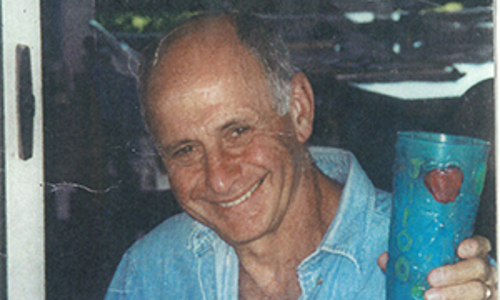
Jim played high school football in Belmont, MA. At the beginning of his senior year he sustained a concussion which left him in a coma for two days. Although that ended his football-playing days, he went on to play baseball for Harvard during his undergraduate years, and was a lifelong recreational tennis player.
Jim’s professional work was in academic medicine. He served as chief of Infectious Diseases at both NYU/VA Medical Center in Manhattan and New York Hospital/Queens from the early 1970s until just a few months before he died. He developed an international reputation for his original clinical research in his field.
In 2002 he underwent neurosurgery for a brain tumor, which was diagnosed as Rosai-Dorfman Disease, an extremely rare condition. Although he returned to work and functioned well for several years, he began to decline; it began with a seizure in 2008 and then subtle, but increasingly apparent, changes in mood and affect, as well as difficulty with mobility.
Although his death was attributed to complications from Rosai-Dorfman Disease, his wife Barbara contacted Chris Nowinski and Dr. Robert Cantu at the Concussion Legacy Foundation, asking them to consider his case because of his high school football concussion history, as well as two or three head injuries he had sustained in auto accidents as an adult.
Patrick Risha
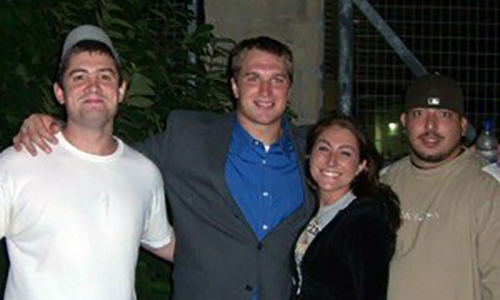
When Patrick was born on December 15, 1981, he was instantly attentive, happy and immediately seemed so knowledgeable about the world and his place in it.
So much so, that we were driven to take this wise little bundle to the window and show him the morning horizon of Pittsburgh and the big world beyond. He seemed so at ease with everything. Patrick would go on to be successful in just about everything he tried. We remember his music teacher telling us he was gifted at playing the Saxophone. We remember his writing teacher saying he was a gifted writer. He was multiplying in kindergarten, but he was multiplying touchdown scores. Football was his greatest love at the time and made the beautiful gleam in his eye shine even brighter.
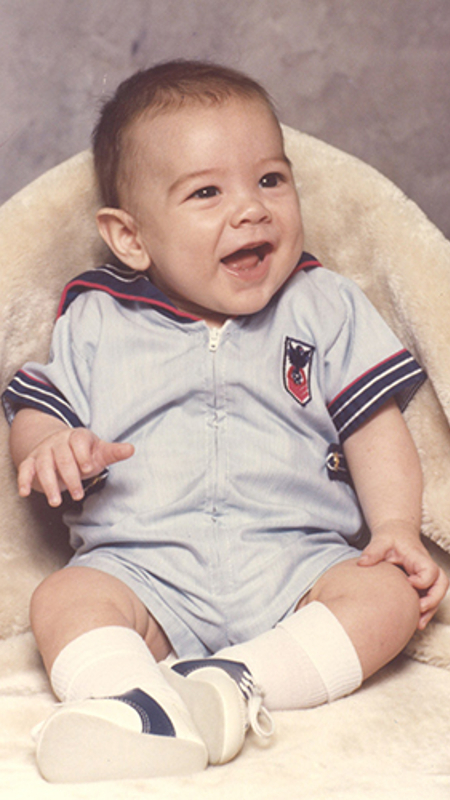
Patrick’s dad was a high school football coach. As a child, Patrick got opportunities to be with “coach” in the locker room, on the sidelines and he developed an immense love of the game. He valued studying it, watching it, but mostly playing it. He started playing for the Elizabeth Forward Mighty Mites team when he was 10. While he did not have immediate success, the wonderful thing about Patrick was that he could excel in just about anything if he wanted it badly enough. He worked hard, he listened to his coaches and he learned to be a great team member. As a gifted athlete, Patrick also played basketball and baseball in grade school reaching the playoffs in both sports.

By the time he reached Elizabeth Forward Middle School he developed into a running back for the football team. He was also playing on defense. He was good enough to be bused to the High School to play in a few JV games. His 9th grade football team won the Keystone Conference Section Championships. He continued playing baseball as well, becoming a fantastic base runner and catcher. His team won the Suburban Pony Central Division Baseball Championship. He was such a fun athlete to watch. He played sports with enthusiasm, joy, and tremendous effort and when he joined the track and field team his 400-meter relay foursome made it to the Pennsylvania AAA Championship Meet.
Football really took hold of Patrick during his high school career. He considered football a test of courage and a rite of passage for a young man growing up in Steeler Country in the football rich Mon-Valley. He became a record-setting star player for the Elizabeth Forward Warriors. He played strong safety for the defense. On offense Patrick rushed for nearly 4000 yards garnering school records for most career yards, touchdowns, and attempts, for most season yards, touchdowns, and attempts, and for most game yards. He was awarded the 1999 Tribune-Review Terrific 25 (from 129 schools), the 1998 Daily News Most Valuable Player, the 1998 and 1999 Pittsburgh Post-Gazette Fabulous 22, the 1998 WTAE Athlete of the Week, and the 1998 Fox Sports Athlete of the Week. He was the team Captain for two years and loved inspiring his teammates to play as hard as possible and be good sportsmen. His coach nicknamed him “The Horse” and he became known for never letting the first hit take him down. The papers announced: “Warriors Ride Risha into the WPIAL Payoffs,” which they succeeded in doing both years. He was just a courageous kid playing a man’s game. He was exceedingly brave as he took brutal poundings as every opposing team keyed in on him. As a member of the ELI-MON Honor Society he continued enduring constant battery on the field to keep his dream of an Ivy League Education alive. He gave up baseball to concentrate on football, track and field and to maintain Honor Roll status. During high school he also wrote for The Warrior Newspaper and placed second in the Social Studies Fair.
Deerfield team
In his senior year, Patrick accepted admission to Colgate University, but then in the summer he had second thoughts and decided to continue his quest for the Ivy League. As a result, he enrolled in Deerfield Academy in Massachusetts as a post-graduate student to further improve his academic standing and play more football. He made lifelong friendships at Deerfield and was the star of the football team. The student body would cheer “RISHA” as he rushed the ball down the field. The following year he accomplished his dream and headed off to Dartmouth College in Hanover, New Hampshire. His future was so bright and full of promise.
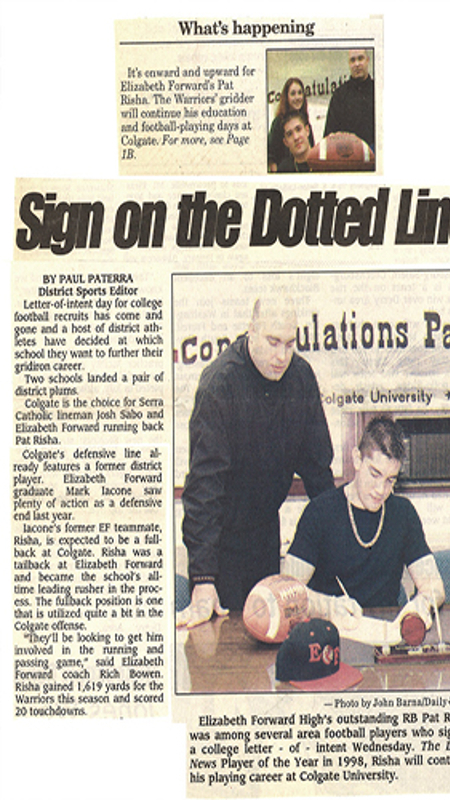
Patrick at Dartmouth
At Dartmouth he was a three-year letter winner in football. He “started” for two years, despite missing a year due to injury. As a freshman running back he averaged over five yards per attempt. He also became a football film junkie and analyst and loved breaking down plays, games and techniques. He was a member of GDX fraternity and was thankful to have so many great friends to call brothers. In fact one of his GDX brothers became a brother-in-law when he introduced his sister, Amanda, to Rich Walton. Patrick was always so protective of “sissy” and maybe in his amazing way made sure she met the perfect guy. At Dartmouth he majored in Government and looked forward to starting a professional career.
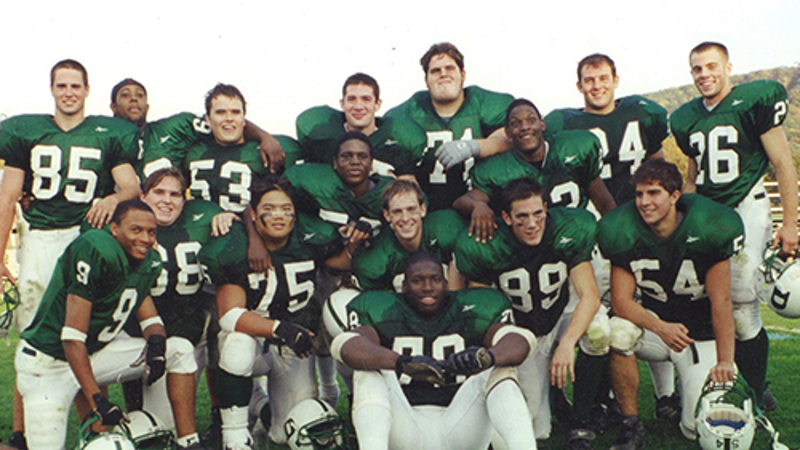
After college, Patrick returned to Pittsburgh to work and help his father who was in failing health. They were best friends. Unfortunately Patrick’s CTE symptoms were beginning to become more prominent and he had a hard time settling into a career. The father and son loved and supported each other until Pat Sr. passed away unexpectedly on October 23, 2010, two days after the birth of Patrick’s son Peyton Jordan Risha (named after athletes of course), who was born on October 21, 2010. As Patrick struggled more and more each day with his CTE symptoms and the sudden loss of his father, the one bright light in his life was his son. Unfortunately Peyton had Patrick in his life for such a limited time, but Patrick did everything he could do to secure Peyton’s future. Patrick’s love will always surround Peyton and when Peyton smiles you can see that same “Patrick gleam” in his eye.
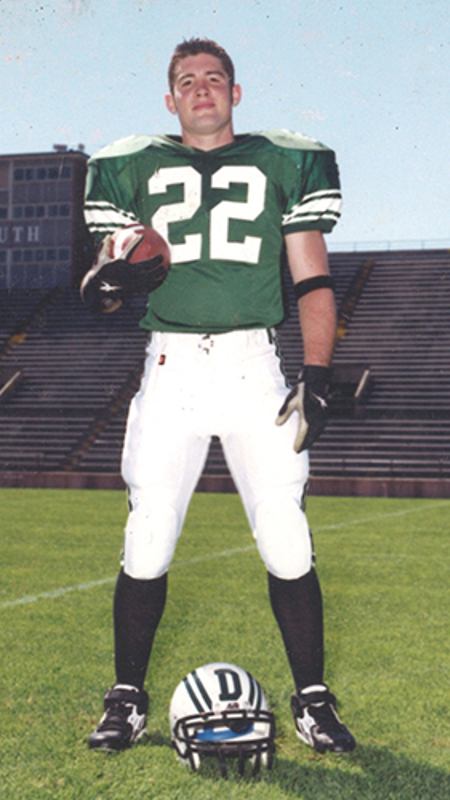
Although so much of Patrick’s life focused on football, he was much more than a football player. He was a devoted son, loving and protective brother, great friend, and the most loving father a child could ever hope for. It is hard not to remember the pre-CTE Patrick who loved watching movies and sports, betting on silly things with friends, eating enormous meals, playing video games for hours on end, golfing, and making people laugh until they cried. He made an impression on everyone he met. He was kind to every person he encountered and could make any one feel important. His heart was huge and he was extremely generous and loyal.
His friends from Deerfield and Pittsburgh wrote:
“There was no one else quite like him. I loved his big smile. He always had a crazy story to tell and I always enjoyed being in his company. He so loved his son, family and friends more than anything in the world.”
“His happiness was contagious and he had the ability to light up any room.”
“The most loyal friend.”
“Patrick was a very generous and caring man.”
“I remember the eulogy he gave to his father that brought tears to everyone’s eyes. I remember his heart, his toughness, and how happy he was to be a father.”
“Patrick was kind and generous to all…when my father passed away, he was one of the first to show up at my door to see what I needed, what he could do or how he could help make it better.”
“He never backed away from a challenge and always competed with dignity.”
“Larger than life, a heart as big as Texas. He loved his family and he loved Peyton.”
And his Dartmouth friends wrote:
“While upperclassmen were usually dismissive to freshmen, Pat was always nice to freshmen running backs and included us in the group. He would drive us to meals and hang out with us at GDX. It may sound insignificant, but it meant a great deal to a bunch of young guys who had just moved away from home for the first time.”
“Pat was one of the funniest people I ever met. He would crack jokes in the meeting room and it made things bearable in lots of ways. He would bust everyone’s chops, including our Coach’s. He was a great character and a fine man.”
“He injected a special kind of energy into situations. He kept life interesting and was a real force of nature.”
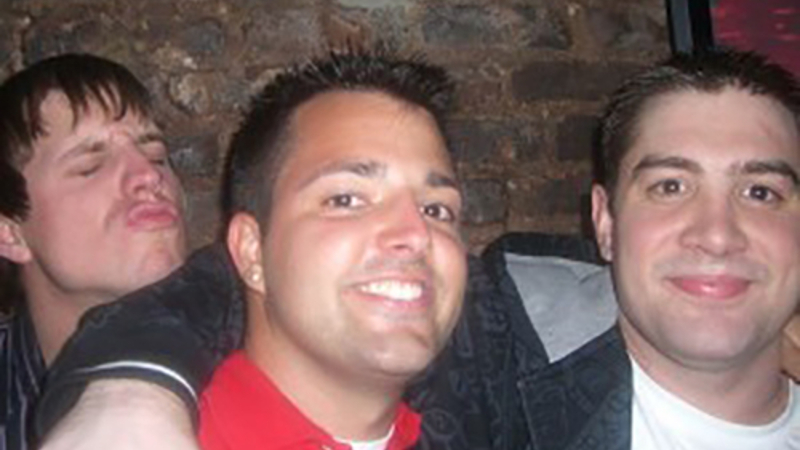
“He was highly intuitive (actually one of the smartest people I’ve met) and knew that he could cause issues at times, but he also had your back in a way few other people could.”
“There is no one more genuine than Pat, he told you how it was and the world needs more of that. He was a true individual and I will always remember him as a hard nosed football player and more importantly a great friend.”
“Even as a freshman, he was probably one of the toughest guys in the league to tackle with a ball in his hand. He obviously was a skilled player, but his toughness made him a great player.”
“Pat was loyal. Pat didn’t let everyone in, but when he did and gained your trust, he would do anything for you.”
“He was an amazing big brother and would do anything for his sister, and as a result, he drives me to be the best big brother that I can be to my younger sister. “
“Pat would always make sure I was taken care of, he would let me borrow his truck, buy me dinner, or hook me up with a fancy suit when we had a frat house formal.”
“I think the biggest thing I respect about Pat is that he was a leader not a follower. He did what he did because he wanted to and never did things because it was the ‘cool’ or ‘trendy’ thing to do.”
“At Dartmouth Pat liked to play the role of a ‘tough, blue collar’ football player from Pittsburgh. As a linebacker who frequently butted heads with him in practice I can attest to him being one of the toughest guys I’ve ever known. He wanted to be remembered as that guy, but I mostly remember Pat as being creative, funny, and loyal.”
“He never seemed to forget people and was a real force of nature.”
“Pat turned ‘brother Casanova’s’ lines into a Top Ten joke at our weekly meetings and that will go down as one of the best moments of my time at Dartmouth. He had a room of 60 guys with the attention span of about 3 seconds hanging on every syllable. It was one of many brilliant performances he had over the years.”
“While he liked to play pranks on guys and joke around, everyone knew that he was fiercely loyal and loved all the guys on the team.”
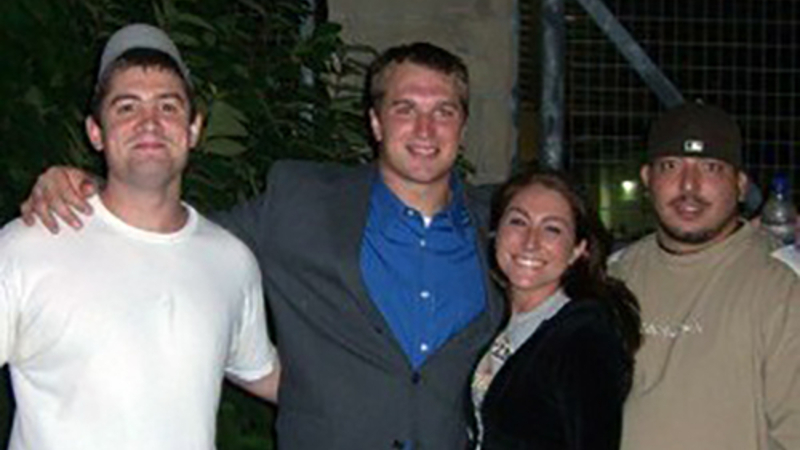
“Pat was a man who accepted people for who they were without judgment. He did not tolerate other people judging his family, friends, or himself and in turn he would not judge other people.”
“Pat had a huge heart and would fight for the people he loved. Without questions, he would give you the shirt off his back, the keys to his car, and would sacrifice his own well-being to help you solve your problem.”
“For those of us who truly had the opportunity to get to know Pat, we knew a man who was creative, funny, sensitive, accepting and above all loyal to his friends and family. He made a profound impact on my life and how I view relationships. He was a man who I am proud to have called a friend.”
“You could always count on Pat being around to talk to. Whether it was a question of some importance or just to shoot the breeze with, Risha would always open his door and talk with you. I can remember many good and hilarious conversations we had together up in his room.”
“Patrick was a great addition to the fraternity and I feel fortunate to have known him. I can still remember his laugh and a certain fire in his eye and his huge smile. He will be sorely missed.”
“Risha always thought about the younger guys and helped us feel like we were all a family.”
“He was always a very funny and unique character that everyone loved having around.”
“My favorite memories by far are the little ones, the little conversations that we would have over a beer while he dominated me in ‘Madden.’ The topics were often very random and I was always stunned by how much he knew/cared about such little things. Pat was just a loyal friend. About as loyal as any person that I have ever met.”
One of Patrick’s Dartmouth classmates said he had to sing a Jack Johnson song for extra credit in one of their classes. The last lyrics of the song were:
“Things can go bad
And make you want to run away
But as we grow older
The horizon begins to fade away…”
Patrick is no longer here to tease us, hug us, or help us, but in many ways his heart and love are all around us. We lost him much too soon to a disease that was created by his hard work, determination and will to succeed despite tremendous obstacles, and his efforts to please his friends, family and schools. No one sought success and friendship more than Patrick but CTE took all that away and left him with a brain that was failing him at every turn and changing his essence of love and caring.
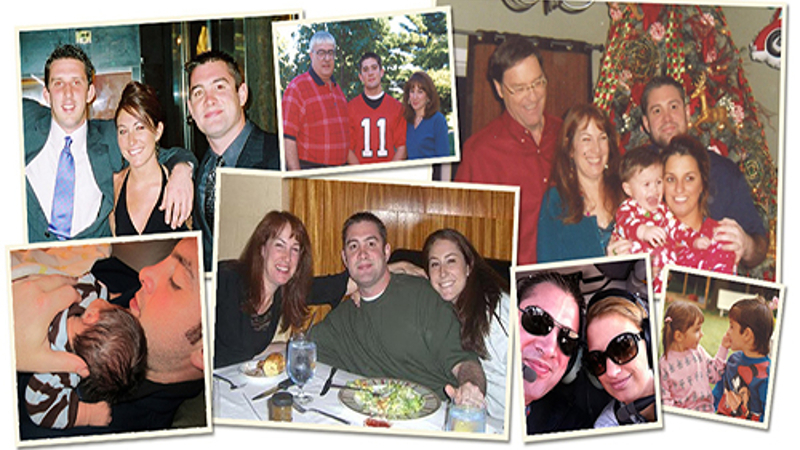
Patrick left behind a wonderful legacy of being true to self, loving, protective, caring, and loyal. Sadly, CTE was eroding all that made him so special. Even the special glint in his eye was hard to find in his last few months. Suicide is a tragic yet common result of CTE and it worked its way into his brain as it has done so many others. However, it never took away his soul. We will always have that. Patrick’s son, Peyton, will always have that.
This was not the life we wanted for Patrick, but we accept his sacrifice and know he is guiding us to help others in new ways and with great purpose: to save other young minds from the devastation of CTE and to prevent this heartbreaking loss in others.
Read the New York Times article on Patrick Risha here.
Cooper Robbins Jr.
I am grateful to the Concussion Legacy Foundation for this opportunity to write about my father’s life after playing high school and college football. I enrolled him in the brain injury study when he was 81 years old. I was confident that Cooper Robbins Jr was a good man, and I wanted validation that he was not himself when he developed signs of dementia with behavior disturbance after the age of 70. He died at the age of 83, and sure enough, he was diagnosed with full-blown severe Stage IV CTE. On the phone call with results of the study, the researchers told me that he had done remarkably well, considering the extent of his brain injury.
My brothers & sister have been determined to remember him as the loving father that he was for most of his life, and we hold on to memories of the good times that we had together. His story is a testament to the resiliency of the human brain, as well as his remarkable strength of spirit. He was good-natured and kind-hearted up until his death, in between the episodes of behavior disturbances during his later years. Before describing some of the subtle, and later, more obvious signs of his brain injury, here is some background.
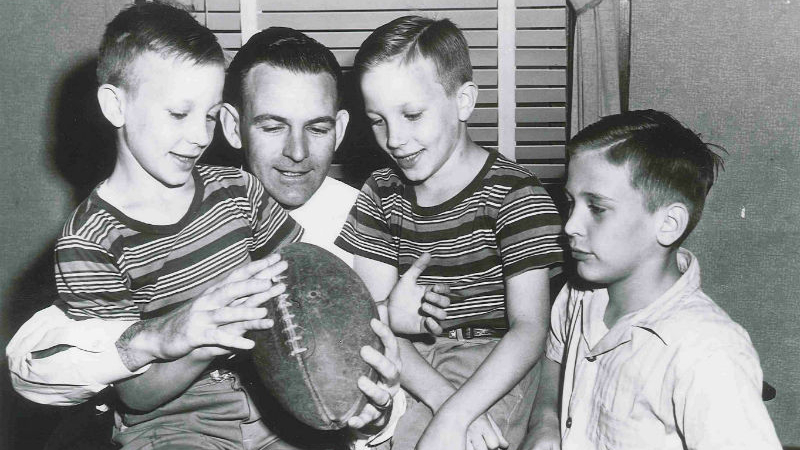
Cooper Polk Robbins, Jr. was born March 17, 1932 in Fort Worth, Texas, to Cooper and Elizabeth Robbins. His father, “Pop,” coached football at Northside High School & then Diamond Hill High School. The family moved to Breckenridge, Texas, when Cooper Sr. became Head Coach for the Breckenridge Buckaroos. Cooper Jr. played football with his twin brothers Ronald & Donald Robbins. Cooper Jr. played linebacker on defense and center on offense at Breckenridge High. Cooper Jr. was called “Tuffy,” as he was a real tiger on the football field. Here is his brother Ronald’s account of one football injury. “During the Graham game in high school his senior year, he made the player in front of him angry and the guy hauled off and slugged him in the mouth! They didn’t have face guards then. The blow knocked out Cooper’s four front teeth! He ran off the field with blood running down his jersey. Doc Payne grabbed the cleat pliers and pulled out the remnants of the four teeth. Ma Robbins nearly had a heart attack. She came running down from the grandstand and onto the sidelines, but the deed was done. The NERVE! Pulling out her boy’s teeth by the roots, and with dirty cleat pliers at that! Undaunted, Tuffy played the rest of the game!”
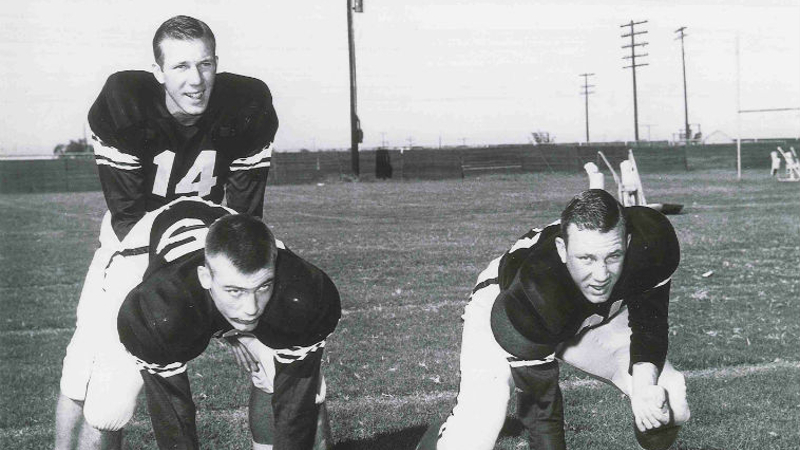
Cooper Jr. was an Eagle Scout, earning bronze and silver palms. He taught “Indian lore” and taught “Indian dances” at Camp Billy Gibbons for several summers. He was one of four Boy Scouts from Breckenridge Texas who went to the 1947 World Scout Jamboree in Moisson, France. After that, he joined the Sea Scouts and earned the rank of Quarter Master. He was also a promising drama student, winning a statewide award for his performance in Our Town.
After graduating from Breckenridge High School, Cooper Jr. enrolled at Texas A & M and was in the “A” Athletics Company in the Corps of Cadets. Cooper received a Fish Numeral and two Varsity Letters in football. Again, quoting brother Ronald, “Cooper Jr. didn’t have a football scholarship when he started at A&M. He had to earn it. He was the toughest 153-pound linebacker anyone had ever seen. When he tackled a guy, he didn’t just hit. He would tackle the player and hang onto him for dear life until help arrived. Also, he couldn’t see worth a hoot, so he wore thick goggles to be able to see the enemy. But the goggles would fog up and at times he would fiercely tackle the wrong man! His toughness paid off, and by the start of his sophomore year, he had earned a scholarship. ” He was a ‘red-shirt’ one year, so he could play football his senior year, because his architectural degree required 5 years to complete.
Cooper Jr maintained lifelong friendships with his teammates from Breckenridge Broncos & Texas Aggies. Here is an account from his teammate Walt Hill: “One of my fondest memories of Cooper is his love for football and competition. On the football field he was center and linebacker, and although undersized for those positions, there was no one tougher than Cooper when it came to getting the job done. Cooper had lost some teeth in earlier years that had been replaced with a permanent bridge, and on the first day of practice they were all capped and beautiful. After about the third scrimmage or so, all the caps were gone and only the studs were left, which embodied the way he played the game. At the end of the season he’d return to Breckenridge get the caps put back on and in returning to practice the next year, the process would start all over again.”
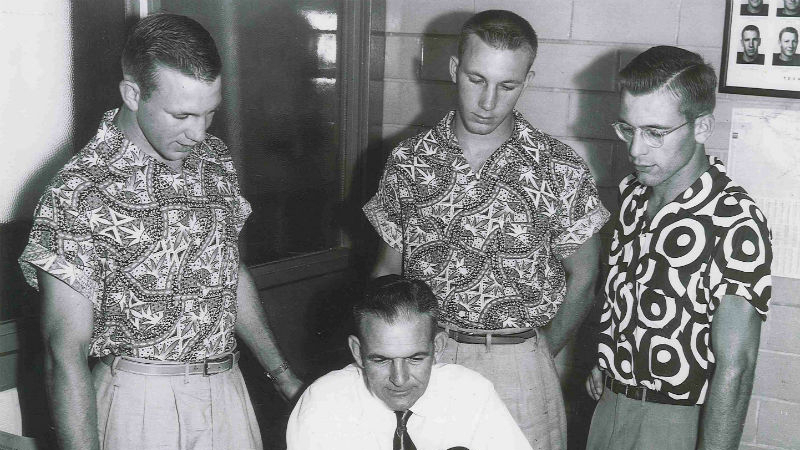
Cooper Jr. graduated with a Bachelor of Architectural Construction degree, but was not commissioned in the USAF due to poor vision. He entered the construction industry and was a cost estimator and superintendent during his career.
Cooper Jr married Batty O’Bannon in 1953. He was a loving father to their 2 daughters and 2 sons. Betty passed away in 1963. Cooper Jr met & married Sara Lynn Leck in 1964, and celebrated their 51st wedding anniversary on April 17, 2015. Coop & Sara lived in Odessa, Midland, Morgan’s Point Resort at Lake Belton, and College Station. They both enjoyed being active church members. Sara cheerfully organized family get-togethers for the holidays. Coop & Sara attended many class reunions, for Breckenridge High School, Wink High School, and A & M Class of ’53.
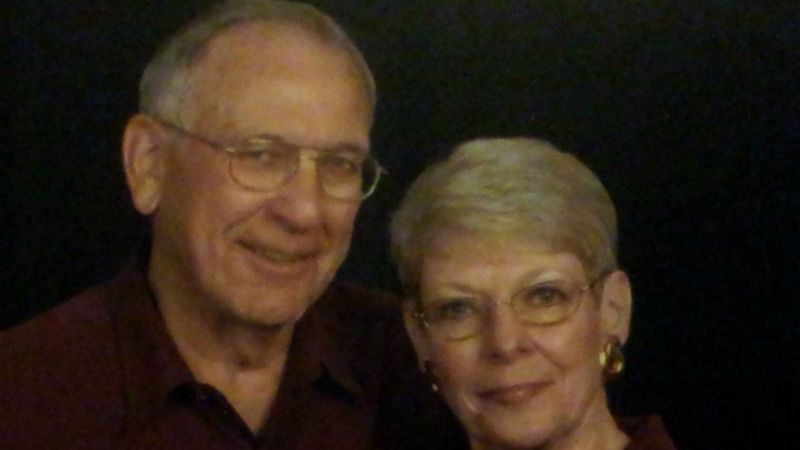
The signs of chronic traumatic encephalopathy are just now being discovered, so it’s difficult to know how his brain injuries contributed to how he lived his life. As a young widower with four children, Cooper Jr. was stoic in his grief, with quiet determination and a strong work ethic. If he had headaches, he did not complain. He did suffer with chronic sinus congestion and a runny nose. He was a perfectionist, both at home and at work as a construction cost estimator. His son Bill remembers hearing that Cooper Robbins was “legendary” and no one wanted to bid against him for a job, because he was so accurate, if you got the job, you had miscalculated.
In his life and work, Cooper Jr voiced his frustration with others’ dishonesty, incompetence or substandard work of any kind. During his 40’s & 50’s, his work-related frustration grew at times, into seething anger and insomnia. He was treated for depression. His competitive team spirit devolved into a kind of hateful, “you’re either with us or against us” outlook on life. Cooper Jr retired at the age of 70, and moved with his wife Sara to College Station. He planned to be active in the 12th Man Foundation, The TAMU Letterman’s Association, and the Aggie Class of ’53. He & Sara became active members of Covenant Presbyterian Church. They enjoyed road trips & weekend guests at their home. Unfortunately, he experienced more frequent episodes of angry outbursts, poor judgment, and worsening memory. He withdrew from social activities, and pushed away dear friends & family members as he became more reclusive. He disowned his children. He continued to attend church on Sundays, where he was cordial when greeting friends, but unable to carry on a conversation. He had always been controlling, but eventually, he would not allow his wife Sara (or their cat) to leave the house. He insisted on managing their finances alone, and yelled at her if she questioned him. He loved to work in the yard, but he suffered from peripheral neuropathy, and developed a stiff shuffling gait that could freeze up making it impossible to move. At 81, he began to have visual hallucinations and delusions, with cognitive fluctuations. He developed incontinence but refused help with changing his clothes. Most of the time, though, Cooper Jr. was still good natured and kind hearted, as if his childlike self was intact with good social skills, until he was angered again. Sara passed away in 2015, and Cooper Jr was moved to Assisted Living with his elderly cat Minnie at his side. He passed away on January 19, 2016.
Thankfully, Cooper Robbins Jr’s legacy donation and personal story may help improve awareness & education to prevent, or at least decrease the risk of Chronic Traumatic Encephalopathy in young athletes. In the words of his friend and teammate Walt Hill, “He was a great team player and was loved and respected by everyone privileged to be his friend. He was truly admired by and an inspiration to everyone with whom he came in contact and while he will be sorely missed by his friends, Cooper will never be forgotten.”